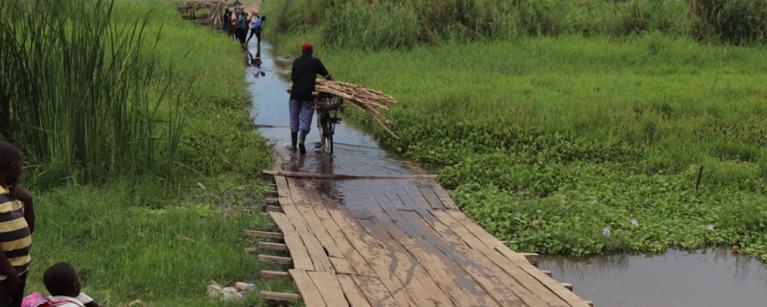Ntoroko District in Western Uganda is no stranger to disasters. For years, the district has grappled with the harsh extremes of devastating floods and prolonged dry spells. In August 2024, disaster struck once again. Heavy rain led to the River Semiliki sweeping through five villages in the Bweramule sub-country, displacing families, submerging homes, destroying livelihoods, and disrupting every aspect of community life. Yet, amid the devastation, the people continue to be resilient and hope for recovery.
A cycle of destruction
The floods of August 2024 were not the first, and sadly, they will not be the last. The Chief Administrative Officer (CAO) Agum Moses emphasizes that “flooding is a continuous problem but is receiving little attention.” “As we speak, more rain is expected in October, and anything can happen.” Ntoroko’s proximity to the Semiliki River and its low-lying geography make it particularly vulnerable to rising waters. When the river banks overflow, entire villages are submerged. Communities are displaced, health facilities are cut off, and the region’s already limited infrastructure crumbles.
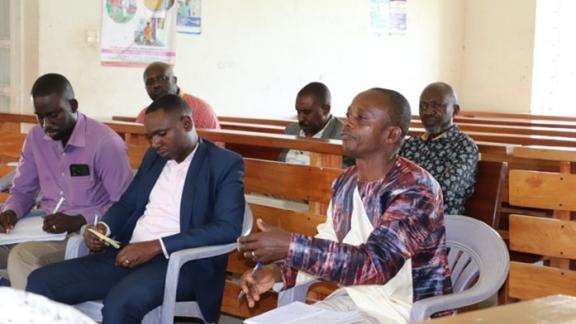
The Human Toll
The floodwaters have not only washed away buildings and crops but affected lives. For many, the journey of displacement has become a tragic way of life. Shallot Tibasaga, a 54-year-old widow and mother of eight, is one of the flood victims. Charlotte lost her home, cattle, and her business in the floods.
She used to be self-reliant, selling fresh food in the local market, but now she lives in a temporary settlement, barely able to feed her family. "I used to run my business and take care of my children, but now we struggle to eat each day," Charlotte shares.
Her children attend a nearby school, Umoja, where UNICEF has provided tents after their original building was submerged. Though they have access to water from the school, it is insufficient for the needs of both the community and the students. “We share what little we have, but it is never enough,” she adds.
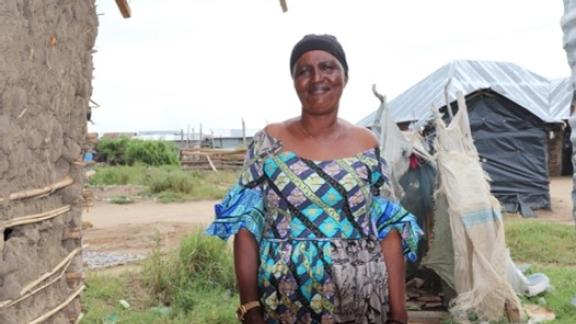
Kellen Bugambwenda, another flood victim, has been displaced five times. A mother of three teenage daughters, she lives in constant fear for their safety. “I pray my daughters can stay in boarding school, where they currently are, because here in the crowded settlement, there are too many risks," she says.
The settlement has no proper toilets or clean water, and Kellen dreads what could happen with her daughters living under such conditions. “It is hard for everyone but even harder for the young and teenage girls.
There have been cases of defilement and gender-based violence in this settlement, but that’s because we have all these boys and men sitting here with nothing to do. It does not feel safe for my girls.” She dreams of stability, a permanent home, and a chance to start a small business, but her current reality is uncertain. "Every year, we are forced to move, and it is hard to make any long-term plans.
While Kellen hopes for improvements in this settlement, like in sanitation, she also hopes to get some skills to help them learn how to manage these disasters so they can have a place to call home. “For the many years I have been in Ntoroko, I can tell that these disasters will not stop, but at least we can be helped to learn how to work on our land to prevent them from destroying us the way they do. We just want to live somewhere safe.” she pleads.
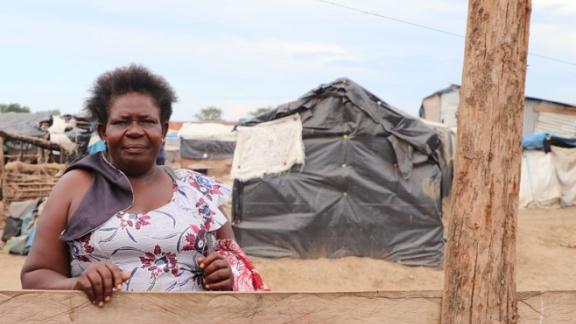
Health, Water, and Livelihoods in Crisis
The flooding has also worsened the district’s already dire water crisis. Despite having rivers and water bodies nearby, many communities trek long distances to fetch water, which is often unsafe due to contamination from floods. “Minerals like salt and iron in the water add to the problem, making it unsuitable for drinking.” Says the District Water Officer. While water purifiers and aqua tabs have been provided by other humanitarian actors, many locals are hesitant to use them because of their taste and smell. Temporary sanitation facilities are easily destroyed by floods, leaving many to defecate in water bodies, exacerbating the spread of diseases. “The district has a gravity water flow scheme, but this system needs to be extended, and other water systems also constructed to reduce the water stress.
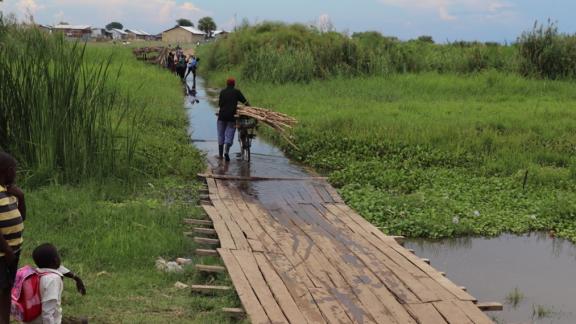
The livestock sector has been crippled. Livestock, the backbone of many communities here, was also not spared. Some animals were swept away, whereas those remaining have struggled to survive in water-logged fields. Farmers, like Charlotte, who lost her cattle, are left without any livelihood. The floods also facilitate the spread of diseases among livestock, such as foot-and-mouth disease, as animals are moved from one place to the other. Farmers desperately need support in techniques like fodder preservation and alternative livelihood options to build resilience against these recurring disasters.
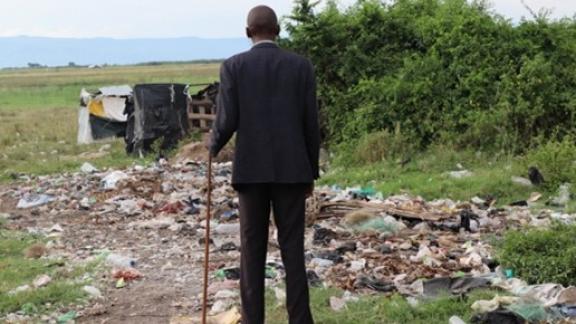
The district also faces gaps in WASH (Water, Sanitation, and Hygiene) services. Long-term solutions for water access, such as rainwater harvesting and solar-powered water systems, are desperately needed. Short-term solutions, like the provision of water quality testing kits and proper sanitation structures, must be prioritized to prevent disease outbreaks like cholera and dysentery.
Building Resilience and Recovery
As Ntoroko District struggles to rebuild after yet another flood, there is an urgent need for support in three critical areas: disaster preparedness, long-term resilience, and emergency response. Local leaders, including the District Disaster Management Committees (DDMC), recognize that without a coordinated and well-resourced approach, the cycle of disaster and displacement will continue.
The stories of Shallot, Kellen, and many others in Ntoroko highlight the human cost of these disasters and the urgent need to support these communities to rebuild their lives and create a better future for their children.
By Dorah Ntunga, Media and Communications Coordinator – Oxfam in Uganda.
